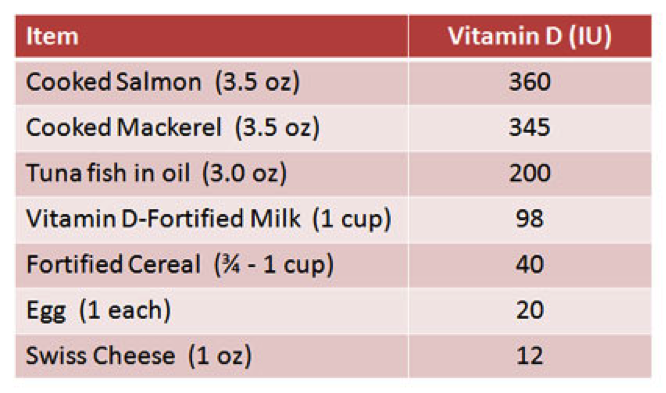The safest and most practical way to increase the body’s level of vitamin D is by taking a daily multivitamin mineral formula (MVM) that contains between 600-1200ius of vitamin D. The new recommended intake is 600 international units (IUs) daily for adults up to age 70, which is 3 times more than the previous recommendation. For people older than 70, the new goal is 800IUs/day. Considering research shows that most people never met the old low recommendations, to reach these new goals with food alone is probably not going to happen for most. Food sources of vitamin D are scarce or not popular, and sunlight (under the right conditions skin can produce some vitamin D when exposed to sunlight) is no longer recommended as a source because it increases the risk of skin cancer and is too variable. Below is a list of foods with relatively high vitamin D content. Other than milk and possibly eggs, as the foods listed are not common to the daily American diet. Add the facts that many adults no longer get nearly as much milk as when they were younger and you would need a lot of eggs to make a dent in your daily requirements, a MVM makes the most sense since it also contains other nutrients your diet may be short on.

Quick facts on Vitamin D: although the Institute of Medicine’s (IOM) raised the recommendation of vitamin D as noted above, most top vitamin D researchers still think they are too low. Many recent studies have linked high blood levels of vitamin D to a reduced risk of many chronic diseases including heart disease, hypertension, cancers, diabetes and others. Therefore, most vitamin D experts recommend blood levels of 25-hydroxyvitamin D to be no less than 30ng/ml (nanograms per milliliter), which may require a daily intake of at least 1000IUs/day of vitamin D.